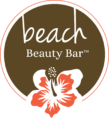The Fitzpatrick Scale is a numerical classification method for identifying the amount of pigment in the skin and the skin’s reaction to sun exposure. This useful classification method was developed in 1975 by Dr. Thomas B. Fitzpatrick, a Harvard dermatologist. We use it to determine our course of action for each individual client. It guides us in the level of active ingredients we choose for clearing acne, as well as the strength of professional treatments we provide in our clinic.
The Fitzpatrick Scale also helps to predict an individual’s overall risk of sun damage and skin cancer.
Here’s a breakdown of the different skin tone classifications.
Fitzpatrick skin type 1
- skin color (before sun exposure): pale white
- eye color: light blue, light gray, or light green
- natural hair color: red or light blonde
- sun reaction: skin always freckles, always burns and peels, and never tans
Fitzpatrick skin type 2
- skin color (before sun exposure): fair or pale
- eye color: blue, gray, green, or hazel
- natural hair color: blonde or red
- sun reaction: skin usually freckles, burns and peels often, and rarely tans
Fitzpatrick skin type 3
- skin color (before sun exposure): fair to beige, with golden undertones
- eye color: hazel or light brown
- natural hair color: dark blonde or light brown
- sun reaction: skin might freckle, burns on occasion, and sometimes tans
Fitzpatrick skin type 4
- skin color (before sun exposure): olive or light brown
- eye color: dark brown
- natural hair color: dark brown
- sun reaction: doesn’t really freckle, burns rarely, and tans often
Fitzpatrick skin type 5
- skin color (before sun exposure): dark brown
- eye color: dark brown to black
- natural hair color: dark brown to black
- sun reaction: rarely freckles, almost never burns, and always tans
Fitzpatrick skin type 6
- skin color (before sun exposure): deeply pigmented dark brown to darkest brown
- eye color: brownish black
- natural hair color: black
- sun reaction: never freckles, never burns, and always tans darkly
Acne and Fitzpatrick Scale
When determining a treatment plan for our clients, we consider three variables:
- Skin Type—oily, dry, combination)
- Acne Type—inflamed, non-inflamed, combination
- Fitzpatrick Type—one through six
Higher Fitzpatrick types react differently and at times more severely to common conditions such as acne, eczema, dermatitis, psoriasis and seborrheic dermatitis (dandruff) which can lead to potential problems with pigmentation, or uneven darkening or lightening of skin color.
Fitzpatrick Types 4-6 run a higher risk of post-inflammatory hyperpigmentation (PIH). People with this skin type should slowly introduce active ingredients into their routine and begin with lower percentages of actives.
When treating clients in our clinic, we conduct a skin sensitivity test on all new clients to access their reaction to active ingredients. This allows us to develop a plan that will not irritate or cause other issues with the skin.
We treat higher Fitzpatrick types much more conservatively when it comes to using benzol peroxide and alpha hydroxy acids. Slowly introducing the actives ensures less of a chance for pigmentation and scarring.
While acne scarring can be difficult to treat in all skin types, it presents a greater challenge in darker skin types due to an increased risk for scarring and PIH. If you start someone with this Fitzpatrick type on too strong of an active ingredient, they may begin to see pigmentation forming.
Darker skin types also have a greater risk of keloid scarring (larger, raised scars), so picking acne is discouraged.
Sun Protection and Fitzpatrick Scale
Everyone should apply sunscreen daily to receive maximum protection. Here’s what else you should know about your skin and how to protect it based on your skin type.
Fitzpatrick Types 1 and 2
If your skin type is 1 or 2, you have a high risk of:
- sun damage
- skin aging from sun exposure
- melanoma and other skin cancers
You should follow these tips to protect your skin:
- Use a sunscreen with an SPF of 30 or greater.
- Limit your sun exposure and seek shade whenever you’re out in the sun.
- Wear a hat with a wide brim to protect your head and face.
- Protect your eyes with UV-blocking sunglasses.
- Wear protective clothing with a UPF rating of 30 or higher if you plan to be in direct sunlight for extended periods.
- Check your skin from head to toe each month.
- Have an annual skin checkup with a doctor.
Fitzpatrick Types 3 to 6
If your skin is type 3 to 6, you still have some risk of skin cancer from sun exposure. You should still use sun protection even though your risk is lower than people with type 1 or 2 skin.
For maximum protection, you should follow these tips:
- Limit your sun exposure.
- Wear a hat with a wide brim to protect your head and face.
- Protect your eyes with UV-blocking sunglasses.
- Wear protective clothing if you plan to be in direct sunlight for extended periods.
- Wear sunscreen with an SPF of 15 or greater.
- Check your skin from head to toe each month.
- Have an annual skin checkup with a doctor.
There are so many factors to consider when treating acne. This is why most over the counter remedies typically do not work.
When you work with our clinic, we take a wholistic approach to solving the acne puzzle for you. We analyze your skin type, acne type, Fitzpatrick type as well as your nutrition and lifestyle habits.
We have figured out the puzzle, and we can’t wait to share your individual solution with you. Schedule a consultation so we can get started putting the pieces together.
Cheers to clear!
Rene




